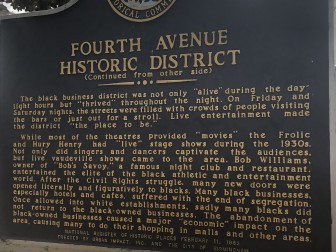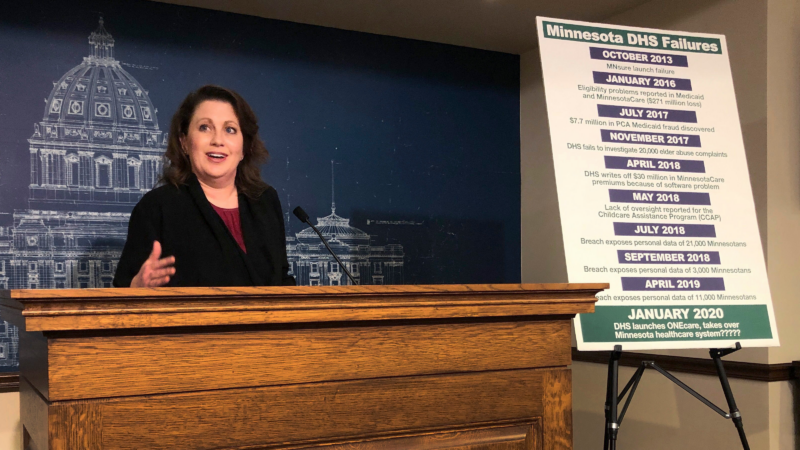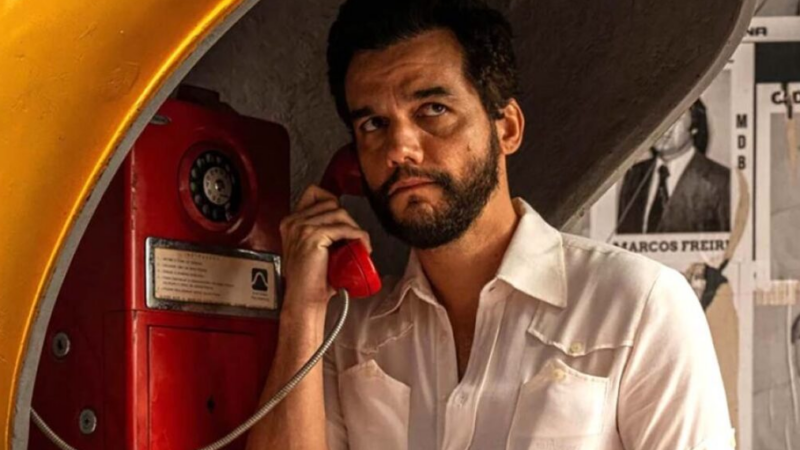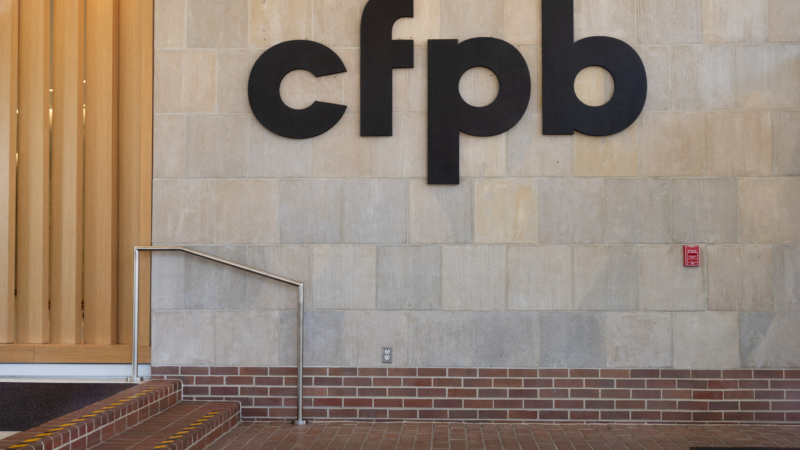Revitalization Planned for Historic Black Business District
During the days of segregation, African Americans in Birmingham were restricted on where they could shop, eat, and do business. The historic Fourth Avenue District downtown became the place for the growing African American business community to set up shop.
The community thrived with professional offices, barber shops, a bowling alley, motels, theaters and restaurants. Now there’s renewed focus on revitalizing the district.
Ivan Holloway, executive director of the nonprofit development group Urban Impact Inc., says the group wants to draw more tourists and residents to the area to sample the city’s black culture.
“If people live here, if people work here, then people visit here, and we have a robust economy,” Holloway says.
Thousands of people visit the nearby Birmingham Civil Rights Institute each year. But around it, there are empty storefronts and vacant lots. Holloway wants to fill those spaces with new shops, professional offices and restaurants.
To that end, Urban Impact is partnering with Main Street Alabama, an economic development group that revitalizes historic communities around the state. The groups met recently with property owners and city leaders to help map out plans for the district.
Holloway grew up in Birmingham. When he was young, his mother would take him to Fourth Avenue to get his haircut. He says back then, it was a vibrant place.
“You could walk down Fourth Avenue, and your mom tells you, ‘Well he’s a doctor. She’s a lawyer. She’s a doctor. He’s an engineer,’” Holloway says. “They owned their building and they owned their companies and they worked. That was important. It meant a lot.”
Nolanda Hatcher, 52, is an architect who also grew up visiting the area. Now she lives and works there, and she’d like for more professionals to do the same.
Hatcher redesigned the old Famous Theater Building, and she sees the area’s potential.
“All of downtown Birmingham is headed in a new direction, and the Fourth Avenue District is no different,” she says. “I think the difference is somebody else being able to see the potential and the opportunity down here, without a lens or racism.”
Eugene Jones says he wants to see the Fourth Avenue District come alive again.
He has been cutting hair at Talk of the Town barbershop for 40 years. He says development dollars seem to pour in to other parts of the city while his area struggles.
“It take money to do this. For some reason, it’s hard to get money into the black neighborhoods,” he says. “It’s been that way for the 70 years I’ve been on this earth.”
Carol Kirby McElderry, who runs Kirby Insurance Agency, Inc., agrees it will take resources to rebuild the district. The agency has been in the historic district since her father founded the company in 1963.
McElderry says the district needs a variety of businesses and professional services, and the black community plays a critical role in sustaining them.
“You have to have a consumer support base, and unfortunately as African Americans, we are probably the most guilty in terms of moving away from minority-owned businesses,” she says.
That trend started once segregation ended. Birmingham’s black residents were no longer confined to the Fourth Avenue District. They could eat, shop and do business anywhere in the city — and they did. But that hurt the historic black business district.
By the mid 1970s, many of the shops closed and the area was overrun with prostitutes and drug dealers.
Then-Mayor Richard Arrington made some improvements to the district, including new storefronts, a small amphitheater, and greenery. But redevelopment stalled.
Holloway says this latest effort has enough support to make it sustainable. When the district observes its centennial in 2022, he says he wants to see 40 new businesses and lots of new faces.
Trump administration says it’s freezing child care funds to Minnesota
President Trump's administration announced that it's freezing child care funds to Minnesota after a series of fraud schemes in recent years.
Flu cases are surging and rates will likely get worse, new CDC data shows
Flu season is off to a rough start this year, according to new CDC data. The virus is spreading faster than in previous years and the surge is likely to get worse. Here's what you need to know.
10 passion projects that stood out at the movies this year
NPR critic Bob Mondello narrows down his favorite movies of the year — the ones that made audiences vibrate.
Judge orders Trump administration to continue to seek funding for the CFPB
The order is the latest in a complex legal battle over the fate of the Consumer Financial Protection Bureau, a watchdog agency.
In a year of steep challenges, there were still shining moments in global health
The Trump administration's deep cuts in U.S. foreign health aid had a devastating impact. Yet there were achievements of note in spite of it all.
An escalation in Yemen threatens to reignite civil war and widen tensions in the Gulf
Saudi Arabia bombed Yemen's port city of Mukalla, targeting a shipment of weapons from the United Arab Emirates for separatist forces. The UAE later said it would withdraw its forces from Yemen.








